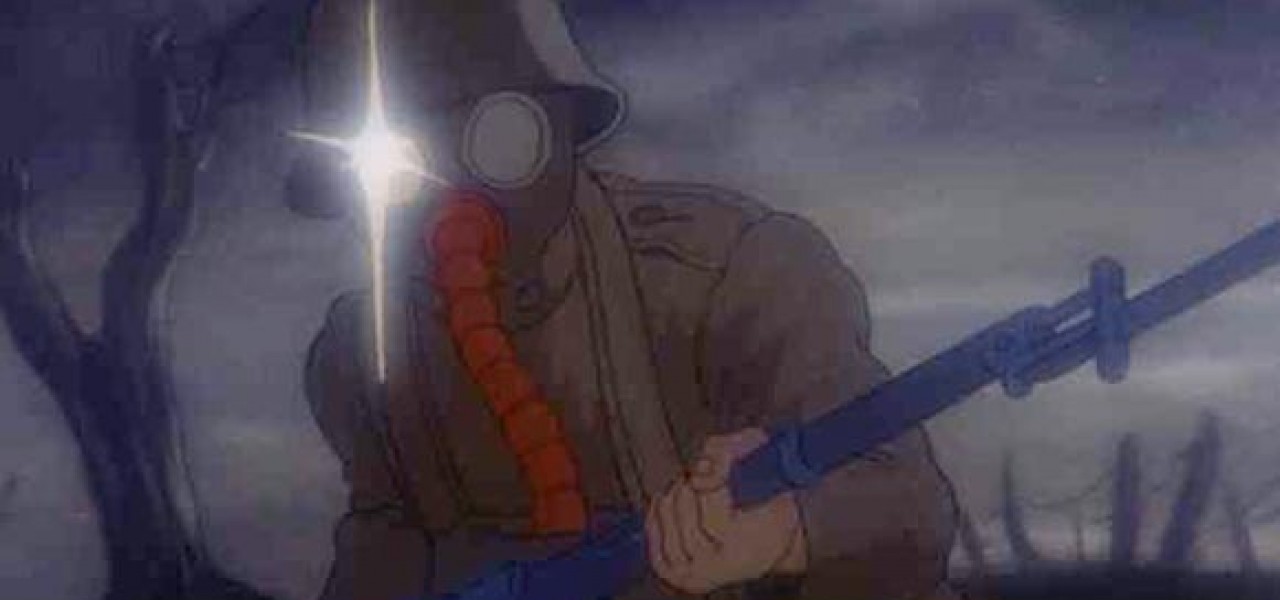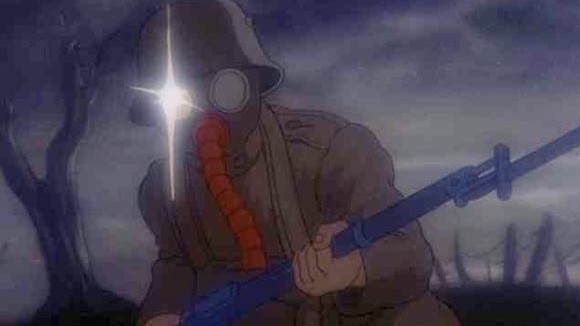

‘Peace On Earth’ Is 75 Years Old—And More Relevant Than Ever
We rarely see Peace On Earth alongside more traditionally revered holiday standards like A Charlie Brown Christmas or How the Grinch Stole Christmas—but we really should.
There are basic arguments to lean upon. Released during the Christmas season and directed by Hugh Harman, Peace On Earth was nominated for an Oscar in 1939, a banner year for Hollywood. It features an uncredited Mel Blanc as a wise Grandpa squirrel, who helps build what he calls “a great old world” inspired by the Bible and anchored in nonviolence. And while MGM’s Fred Quimby reportedly tried to stop Peace On Earth, it made more money than any film Harman ever directed at MGM, according to the director himself.
All of this should be enough to keep Peace On Earth in regular holiday rotation. And yet Harman’s antiwar masterpiece is nearly impossible to find on television, and barely there in print, hidden away on VHS and DVD compilations like an afterthought.

But Peace On Earth’s life-during-wartime dissonance is also brilliantly mirrored by its pioneering experimentation, as it phases between a hand-drawn animal paradise called “Peaceville” and the rotoscoped human brutality of endless battle. This combination of sociopolitical and stylistic ambition makes it stand out like a sober existentialist among what passes for holiday programming, placing Peace On Earth alongside similarly daring but also underrepresented Christmas films like Richard Williams’s surreally sweet Ziggy’s Gift and Oscar-winning adaptation of A Christmas Carol.
From Harman to Bakshi to Jackson, and Back Again
Although previously powerful animated explorations of war exist—most notably, Winsor McCay’s 1918 silent short The Sinking of the Lusitania—Harman’s post-WWI, pre-WWII warning of a barbaric humanity way out of control has few peers from its own turbulent period, or ours. When scholars and geeks close their eyes and think of another example that careens so jarringly from a fairy tale lullaby to a military sci-fi heralding the end of Man, what do they find? And that’s just if they get thematic: Once they factor in Peace On Earth’s stylistic juxtapositions, they’re even more hard pressed to find an analogue, in any decade.

One could make the case that Peace On Earth’s prescient convergences weren’t more fully realized until Ralph Bakshi’s menacing adaptation of Lord of the Rings arrived in 1978. Bakshi’s similarly uneven but (much) more violent epic also veered between hand-drawn fantasy and rotoscoped carnage, bowing in theaters a year after Rankin/Bass’s painterly adaptation of The Hobbit landed on television. That semi-sweet Thanksgiving treat, mellowed by Orson Bean in the lead, tumbled into Bakshi’s darker vision and eventually crashed into Peter Jackson’s CGI overloads, which are currently redefining what it means to define film as animation or live-action in the first place.
It’s worth noting that Tolkien’s harrowing experience at pointless meat-grinders like World War I’s Battle of the Somme helped give hideous shape to Middle-Earth’s terrifying monsters, according to John Garth’s excellent Tolkien and the Great War, from the walking dead Nazgul to the fell dragon Smaug. We can throw the One Ring of power from Jackson’s searing Mount Doom and smack Harman’s apocalyptic soldiers in their helmets. as they creep off the screen like hyperreal terrors in flashing gas masks and glinting bayonets to drive each other to extinction. Though their fearsome expressions took different forms, both Tolkien and Harman’s masterpieces leapt fully formed out of the estranged madness of World War I, right before World War II came calling.

“As I remember the critters, they was like monsters,” Grandpa recalls, as his shadow bleeds into a gask-masked soldier pacing through the fog of war. “They walked on their hind legs, and carried terrible-looking shooting irons with knives on the end of them. Their eyes flashed and they had tremendous big snouts that curled down and fastened onto their stomachs.” The maddening tendency for human “varmints” to pointlessly exterminate each other in great wars to end all wars (a position Tolkien disbelieved) is a tragicomic mystery to Grandpa. “They was always a-fighting and a-feuding and a-shooting one another. They’d no sooner get one argument settled then they’d find something else to fuss about.”
“When they couldn’t think of nothing else to wrangle over, the flat-footed people started shooting at the buck-toothed people,” he sardonically remembers, as Peace On Earth’s satire starts to bite. “And the vegetarians began to fight the meat-eating people,” he adds, as vegan and carnivore flags wave. When all the Men are dead, the animals emerge from the wreckage and find a Bible turned to the commandment “Thou Shalt Not Kill.” “Looks like a mighty good book of rules,” Grandpa concludes, “but I guess them Men didn’t pay much attention to it.”
The Intertextual Extinction
This is not to say Harman’s film is flawless, although few have probably ever made that case. You won’t spend much time in the annals of animation, online or in library stacks, running across texts that give Harman the respect he deserves, instead of a hard time. He’s taken criticism for copycatting contemporaries like his former boss Walt Disney—who, it should be noted, never made a one-reel as powerful and pressing as Peace On Earth—and spent much of his career bouncing from studio to studio. Harman himself remembered Peace On Earth as a laborious, uneven process.
“[It] was a tough one to animate and to write,” Harman told animation historian Michael Barrier in a 1973 interview. “We shouldn’t actually have made that as a one-reeler, we should have made it in about three to five reels. We cut it and cut it and cut it; we didn’t cut footage that was animated—nobody in his right mind does that, unless it’s bad. But cutting the storyboard and switching around. It has some flaws. I just got tired of it near the end. That’s always been a weakness with me, that I get so fed up on it at the end of a picture that I would just as soon turn it over to the Girl Scouts to make. Unless it were a feature that would warrant going on with costs forever. I’ve observed that as a weakness in myself, that I often end up with a weak, insubstantial ending for a picture.”

Although it remains a historical masterpiece, Peace On Earth‘s flaws are apparent. Its first act is spent communicating a joyous winter atmosphere that is annihilated in its second act, a well-meaning destabilization that nevertheless complicates the film’s accessibility, even today. Grandpa sits goofily on sewing needles, a tired gag even for the time, and has a tendency to say “good will to Men” too much. In addition, the climactic scene where the last Man on Earth, having been shot, still manages to shoot the second-to-last Man on Earth is drawn out perhaps too long for current tastes, although that could just be the PTSD talking. His curled hand sinking into the muck, however, remains unforgettable.
But these faults are redeemed by the film’s clever mind and sweet heart. Even atheists annoyed by the film’s biblical proselytizing can appreciate Peace On Earth’s third act, which translates Isaiah’s calls to “rebuild the old wastes” as, “Hey, now that all these monstrous Men are dead, let’s make houses out of their helmets!” This somewhat abrupt, but still subversive, natural rewilding rescues viewers from the human madness it perhaps didn’t expect to suffer through.

Intertextually speaking, this rewilding may even provide humanity a blueprint for how to save itself in an age of similar environmental catastrophe and perpetual war. Esteemed naturalists like E.O. Wilson and David Brower have openly advocated for setting half if not more of Earth aside, to combat the irreversible ravages of global warming our children are living through—as they watch something, anything, during the holidays other than Peace On Earth.
I claim no high ground in this. My daughter is now a pretty wise seven, and my wife and I are still afraid to screen Peace On Earth for her. Because we know that when she sees it, she will not rosily escape from the Real World, but fall screaming into it, and find all of its beckoning nightmares. At this exponential rate, our children face a globally warmed dystopia that looks nothing like the animal paradise of Peace On Earth. In the Real World, our fuzzy, feathered friends are dying off faster than us in a sixth mass extinction more technically referred to as the Anthropocene, a depressing trend that makes Peace On Earth’s rewinding denouement even more appealing.

So watching Peace On Earth next to an artificial Christmas tree as the real ones are deforested, my daughter is not going to soak in the charm of Peanuts or cheer through the redemption of the Grinch. She is going to turn and ask us just what the hell it is we think we are doing. Who are all the doomed fools with guns? What is their problem? Why can’t they all just get along?
This is the philosophical abyss awaiting anyone who screens Harman’s short, sharp shock—which is of course why it is hidden like the historical treasure it is beneath less challenging artistry. Total war may bring a balanced natural peace in the world of animation, but in the Real World it brings nothing but oblivion. Harman hammers that all-important lesson home in hand-drawn whimsy and devastating rotoscoping, in a Christmas short featuring way more shattering revelations than sight gags.
Even in today’s internetworked age, adults and children still rarely get to see the Real World as it is, much less as it should be. If what they see is truly what makes them who they are, then they should watch Peace On Earth before every new year. More than once, if possible.
Watch Peace on Earth:

.png)